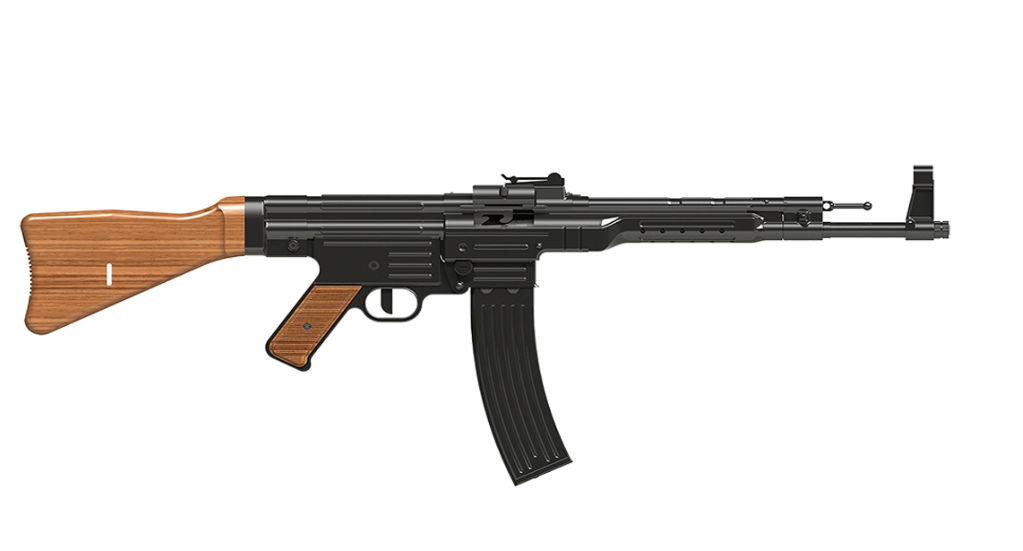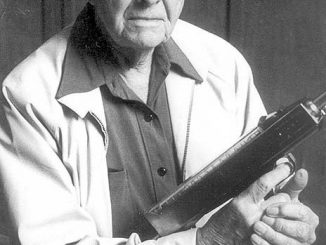The Winchester 1866 was chambered for the .44 Henry rimfire cartridge, like the Henry rifle before it. Before too long, however, centerfire ammunition began to take over as the best and most common type of cartridge. The Model 1866 continued to sell for decades, but some buyers wanted to use centerfire ammunition in them. A centerfire version of the .44 Henry was developed, and conversions of the 1866 were done by both the Winchester factory and professional gunsmiths. Mechanically, the change was quite simple; just replacing the two rimfire firing pins with a single central one, and replacing the bolt face with an insert with a hole for that new firing pin.
Winchester factory example are typically found in the 140,000 serial number range and later. The best-documented batch was a sale of 1,020 centerfire 1866 rifles to Brazil in 1891, with numbers in the 167,000-169,000 range.




So what cartridge is that exactly? .44 Henry Centerfire? .44-40?
.44 Henry (Centerfire)
Historical Notes; This is a centerfire version of the rimfire .44 Henry Flat. It is believed to have been a special cartridge manufactured for the final lot of 1866 Henry (Winchester 1866) rifles made by Winchester. since the rifle was discontinued in 1873, it would be reasonable to assume the cartridge was developed about that time.
General Comments; Rifles for this cartridge are extremely scarce. The 1866 Henry rifle (action) was not very strong, and if anyone has one and wants to shoot it, stick to black powder. The proper charge is 26 or 28 grains of FFg or FFFg. Bullets for the .44-40 WCF can be used.
bullet dia. .423 in.
neck dia. .443 in
base dia. .445 in.
rim dia. .523 in.
case length .88 in.
ctge OAL 1.36 in.
rifling 1:36″
primer small rifle (.175″)
Source; Barnes, Frank C. Cartridges of the World, 6th ed., DBI books, 1989. p.126, p. 147.
That’s what Barnes has to say about it. Take his loading advice with a grain of salt, and no, I accept no responsibility if you try it.
I wouldn’t, period.
clear ether
eon
Thanks for the info
A bit of history that was new to me. Thank you for an article that doesn’t involve “plastic-fantastic” assault rifles, electro-zip guns, edible gernades, etc.
more like edible chemical weapons
Can anyone find out if the .44 Henry c/f was compatable with the Brazilian or Argentinan .440 Nagant revolver cartridge? I believe that Winchester 66’s were bought by some South American countries.
Gwyn
https://www.cartridgecollector.net/44-nagant-brazilian-model
cheers
eon
Surströmming?
Rimfire cartridges were(are) much easier to reload than early centerfire ones like attached head(snider), bennet(trapdoor etc.), bar anvil, martin.
Others were teoritically reloadable – but only once or twice due to weak construction.
“Rimfire cartridges were(are) much easier to reload than early centerfire(…)”
???
How that could be done, considering that cases are formed after injecting priming mass?
“(…)teoritically reloadable – but only once or twice due to weak construction.”
Unless they were designed for that – such cartridge were known in 19th century U.S.A. under name Everlasting https://www.rccbrass.com/40-70-ballard-everlasting/
The exterior dimensions of the .40-70 Ballard Everlasting and the .40-63 Ballard Everlasting are identical to each other, with the .40-63 being slightly heavier with less internal case volume. The term Everlasting became popular with as these heavier cases as they could be reloaded many times.
So called “inside primed cartridges” were produced en masse, some like bennet or bar anvil primed were even adopted by military, by comparison thing like ballard everlasting was more of rich man toy(but I can be wrong).
ps. there is scan of nice article in that topic:
https://forum.cartridgecollectors.org/t/50-45-ip-iron-bar-anvil-help/32999/3